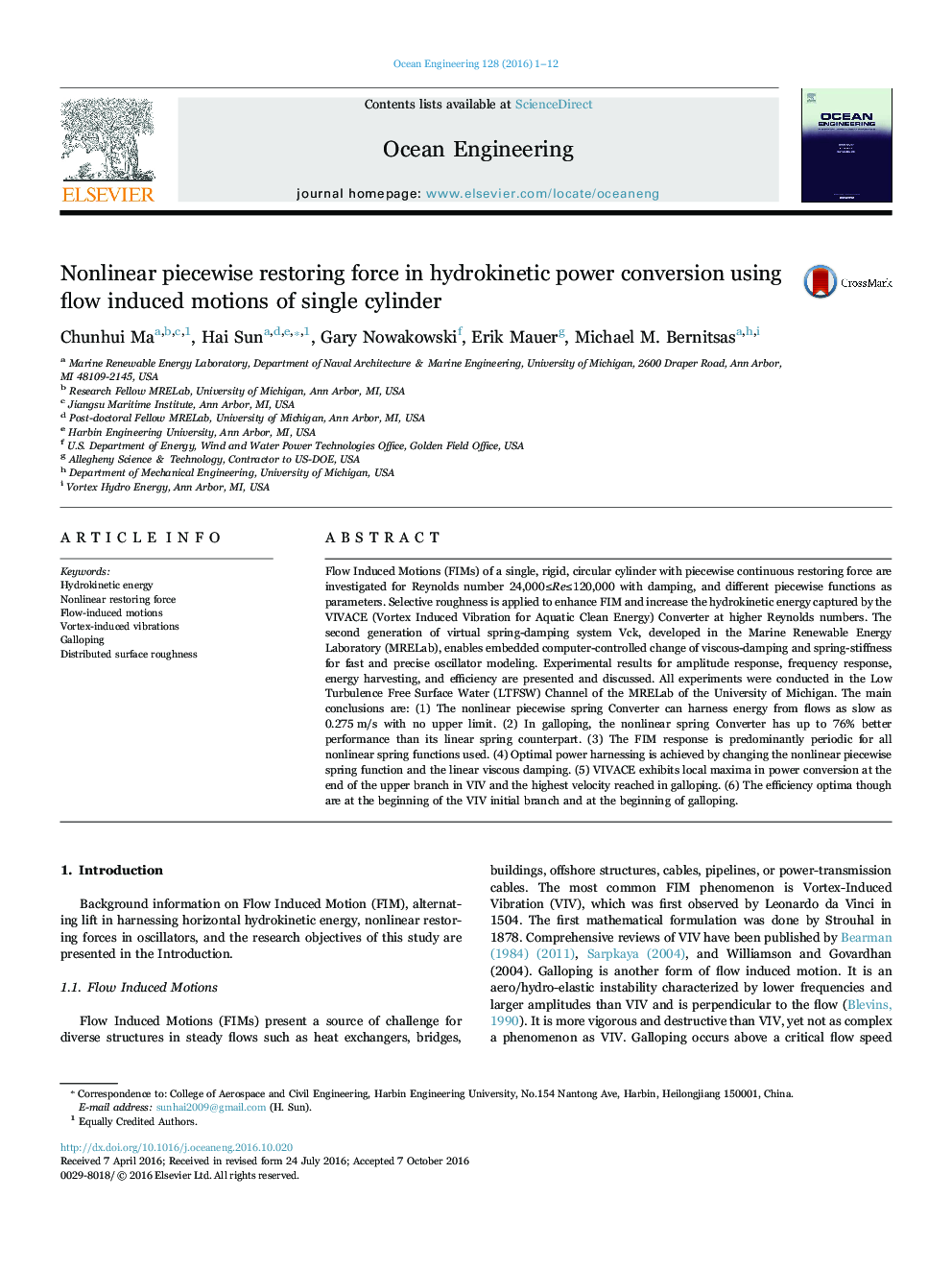| کد مقاله | کد نشریه | سال انتشار | مقاله انگلیسی | نسخه تمام متن |
|---|---|---|---|---|
| 5474720 | 1520662 | 2016 | 12 صفحه PDF | دانلود رایگان |
عنوان انگلیسی مقاله ISI
Nonlinear piecewise restoring force in hydrokinetic power conversion using flow induced motions of single cylinder
ترجمه فارسی عنوان
نیروی بازگردانی قطبش غیر خطی در تبدیل قدرت هیدروکینیتیک با استفاده از حرکات ناشی از حرکت سیلندر تک
دانلود مقاله + سفارش ترجمه
دانلود مقاله ISI انگلیسی
رایگان برای ایرانیان
کلمات کلیدی
انرژی هیدروکینتیک، نیروی بازسازی غیرخطی، حرکات ناشی از حرکت، ارتعاش ناشی از باد گول زدن، زبری سطح توزیع شده،
موضوعات مرتبط
مهندسی و علوم پایه
سایر رشته های مهندسی
مهندسی دریا (اقیانوس)
چکیده انگلیسی
Flow Induced Motions (FIMs) of a single, rigid, circular cylinder with piecewise continuous restoring force are investigated for Reynolds number 24,000â¤Reâ¤120,000 with damping, and different piecewise functions as parameters. Selective roughness is applied to enhance FIM and increase the hydrokinetic energy captured by the VIVACE (Vortex Induced Vibration for Aquatic Clean Energy) Converter at higher Reynolds numbers. The second generation of virtual spring-damping system Vck, developed in the Marine Renewable Energy Laboratory (MRELab), enables embedded computer-controlled change of viscous-damping and spring-stiffness for fast and precise oscillator modeling. Experimental results for amplitude response, frequency response, energy harvesting, and efficiency are presented and discussed. All experiments were conducted in the Low Turbulence Free Surface Water (LTFSW) Channel of the MRELab of the University of Michigan. The main conclusions are: (1) The nonlinear piecewise spring Converter can harness energy from flows as slow as 0.275 m/s with no upper limit. (2) In galloping, the nonlinear spring Converter has up to 76% better performance than its linear spring counterpart. (3) The FIM response is predominantly periodic for all nonlinear spring functions used. (4) Optimal power harnessing is achieved by changing the nonlinear piecewise spring function and the linear viscous damping. (5) VIVACE exhibits local maxima in power conversion at the end of the upper branch in VIV and the highest velocity reached in galloping. (6) The efficiency optima though are at the beginning of the VIV initial branch and at the beginning of galloping.
ناشر
Database: Elsevier - ScienceDirect (ساینس دایرکت)
Journal: Ocean Engineering - Volume 128, 1 December 2016, Pages 1-12
Journal: Ocean Engineering - Volume 128, 1 December 2016, Pages 1-12
نویسندگان
Chunhui Ma, Hai Sun, Gary Nowakowski, Erik Mauer, Michael M. Bernitsas,
